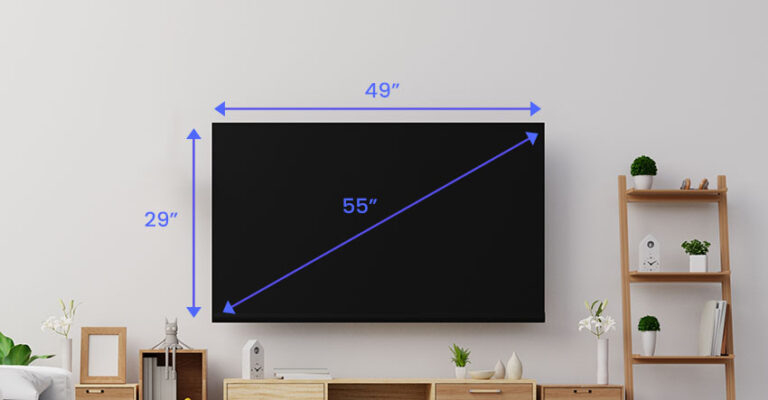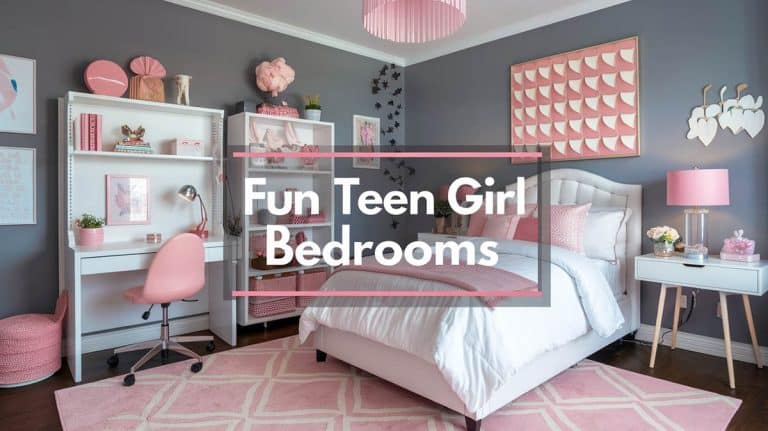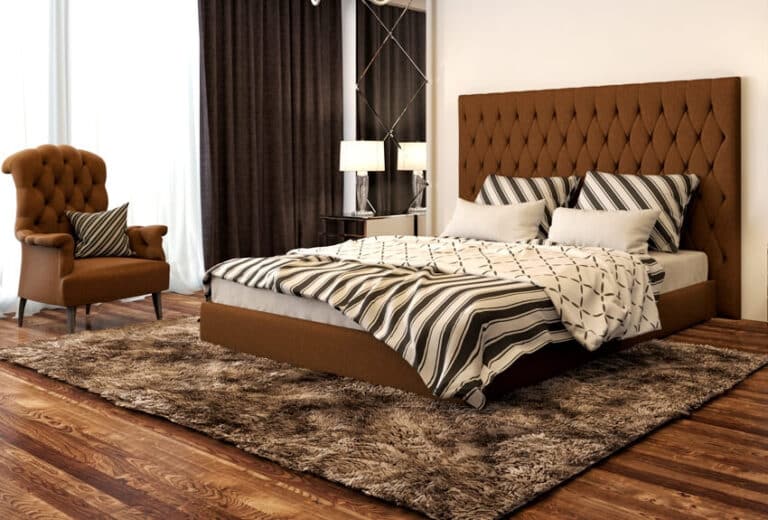How to Create the Most Relaxing Bedroom Theme: Designer Tips

Your bedroom should be more than just a place to sleep. It is your personal sanctuary. Your very own place for retreat to unwind, recharge, and escape the stresses of daily life. With the right decorating guide, you can make a bedroom that feels like a dream hideaway in your own house, whether it’s minimalist zen or cozy contemporary. Below, we talk about how to create the most relaxing bedroom theme along with some expert tips on how you can apply them to your own home.
Use a Soothing Color Scheme
If you want to make your bedroom feel relaxing, start with a soothing bedroom scheme. Think of a harmonious color palette consisting of soft muted tones, pastels or light colors. Some of the best colors to consider when designing a relaxing bedroom are:
Earthy Neutrals – Soft taupes, warm beiges, or light grays evoke a cozy yet elegant feel. Earth tones help bring in natural warmth to a bedroom and makes us feel connected to the outdoors.
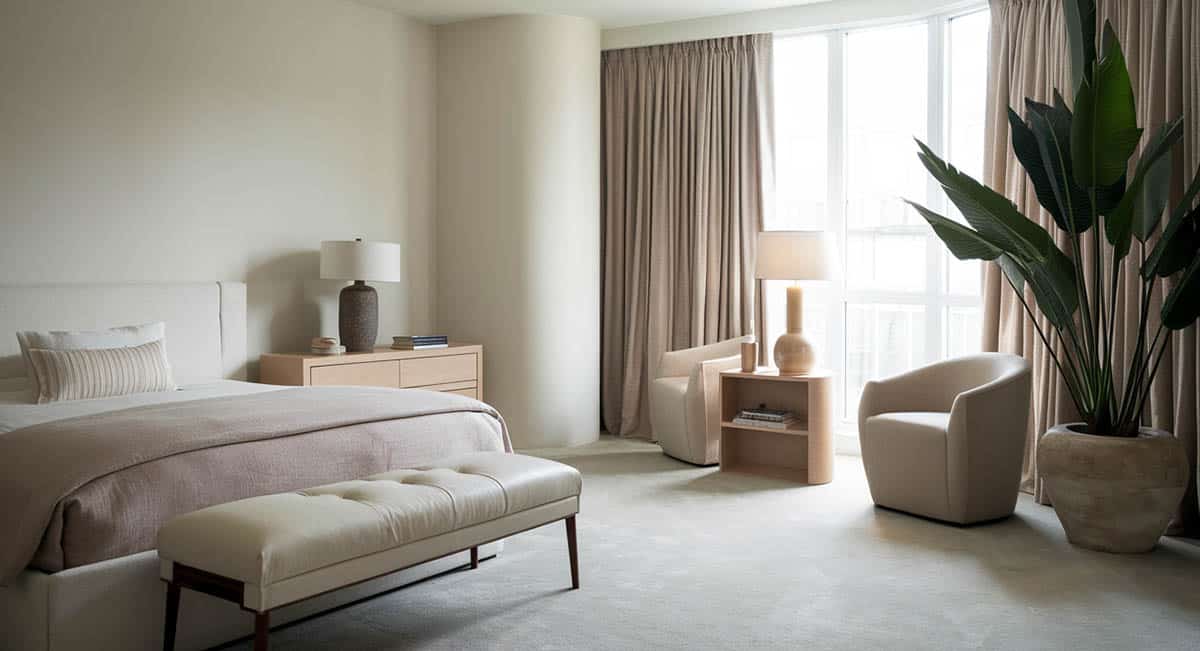
Muted blues and greens – Cool hues like blue and green have a calming effect on the mind and help promote a peaceful feel in a space. Make sure your color palette includes pale, soft shades like sky blue, seafoam green and sage green. According to Calm.com using light grays paired with blue undertones is effective for sleep while also offering a peaceful, modern, and sophisticated look. (source)
Soft Pinks and Lavenders – You can also use warm hues for a bedroom, but make sure that they have a soft, pastel shade. Gentle warm hues like rose, peony, cherry blossom pink, pale lavender and lilac help bring in a comforting touch without being too overwhelming. Plus, these shades can easily make a bedroom look extra charming.
Using white tones – White paint is excellent for use on the ceilings, as it reflects light and can help a room feel larger. It’s advisable to use white for trim and moldings to compliment other colors. However, just using white can lead to the space feeling too cold and drab. Instead, use a balanced color scheme.
According to This Old House (source), not all whites are created equal when it comes to paint colors. You’ve got your bright, clean whites that let artwork or furniture take center stage without casting any colored tint on them. These whites are like a fresh blank canvas – no undertones, just pure white.
Then there’s the shades that lean a little to the cool or warm side of things. Cool white paints mix in subtle hints of green, blue or gray that give off an almost icy vibe. These relaxed hues can lend a calm, crisp touch. On the flip side, warm whites incorporate pale yellow, pink, rust or brown undertones that seem to glow with coziness.
It’s a good idea to use warmer whites when your room is lacking in natural light or if you have a large space that you want to make cozier. Alternatively, cool whites can help enlarge the space.
Interior Design Tip: Layering these colors using paint, linens, and decor will bring more depth to your decor. For example, you can choose a light neutral color for the wall, add a soft green bedspread, then combine blush pink and beige pillows. Veer away from vibrant, bold shades because these can have an overstimulating effect.
Layer Textures for Warmth and Comfort
The right play of textures can really enhance the coziness of a bedroom. When trying to produce a relaxing space, consider textures that encourage you to lay down and linger.
For the bedding, choose high-quality linens in natural fabrics like cotton, linen, or bamboo. Look for a high thread count that feels soft against the skin. For added luxury, layer with a lightweight, chunky knit throw or a quilted blanket.
A soft, plush area rug underfoot can add instant comfort and warmth. Whether you choose a high-pile wool rug or a low-pile woven option, it will add texture and anchor your space.
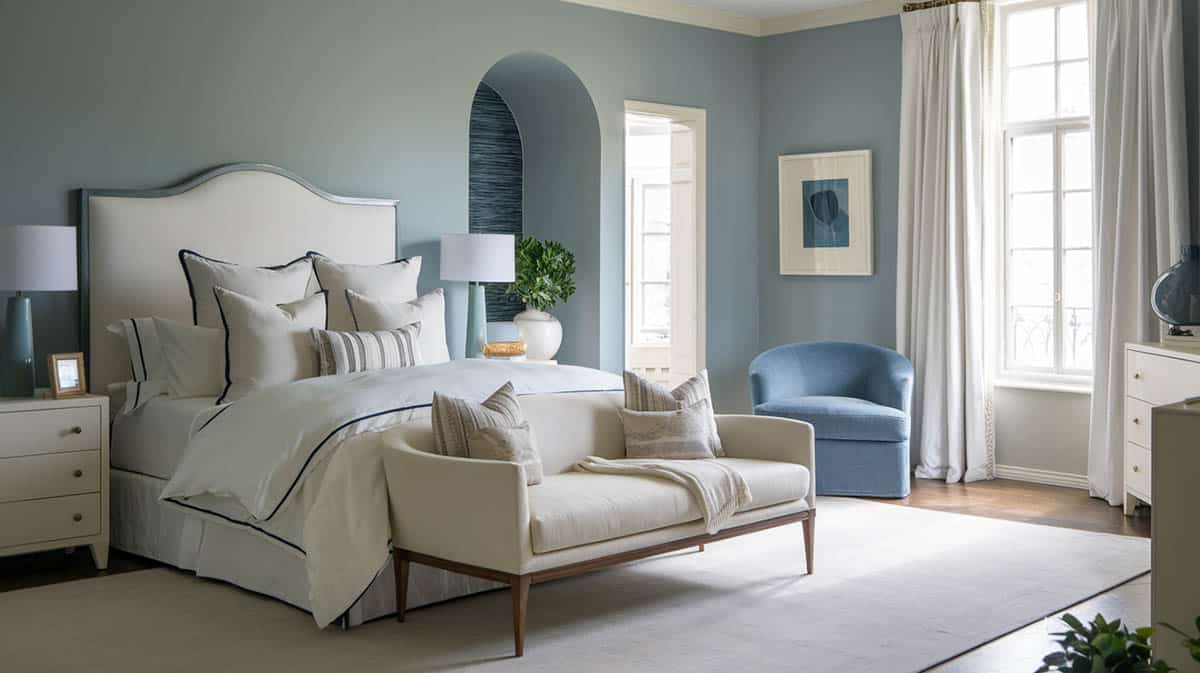
Add accent fabrics and soft furnishings like velvet throw pillows for a little touch of luxury. You can also use plush fabrics in the headboard, or an upholstered bench at the foot of the bed.
Interior Design Tip: If you love the look of the cozy and textured but don’t want to go too heavy with it, then limit the colors to three tones using different materials.
Use the Correct Lighting
In order to create a calming or comfortable atmosphere when sleeping, lighting is essential. In general, warm and softening bulbs help create a relaxing ambiance in the room but you must also have a variety of light sources like an ambient light, a task light and an accent light if you want that full relaxing effect.
Ambient lighting is the primary light in the room, so this light source should not be too bright but rather soft. It can be achieved through a ceiling fixture that comes with a dimmer, allowing you to change its brightness as needed.
Task Lighting includes lights for bedside reading like a wall-mounted sconce or adjustable-armed bedside lamps. Accent Lighting provides subtle indirect lighting and this may be a soft LED strip behind your headboard or under a floating nightstand. It helps add a feel of warmth without overwhelming the room.
Interior Design Tip: Replace the bedroom bulbs with warm ones because the soft yellowish tone helps you relax at the end of the day by simulating the warm glow of sunset sunlight. Stress levels can also be lowered by yellow light.
Block Unwanted Light with Proper Window Treatments
Nothing disturbs rest as much as unwanted light or noise. Proper window treatments are crucial for controlling the amount of light and sound that gets in your bedroom for that restful retreat.
Blackout Curtains are your best bet if you are a light-sensitive person because this type of fabric lets you regulate the amount of light totally. Layered curtains like a sheer panel combined with blackout curtains are also great for diffused natural light throughout the day but maximum privacy at night. Another great option are heavy drapes that can help block outside noise, making them ideal for light sleepers.
Interior Design Tip: Select curtain rods and hardware that fit with the room’s style — like polished metal for modern, brass for traditional and black for contemporary. Think about how your curtain colors tie in with the other elements in the room.
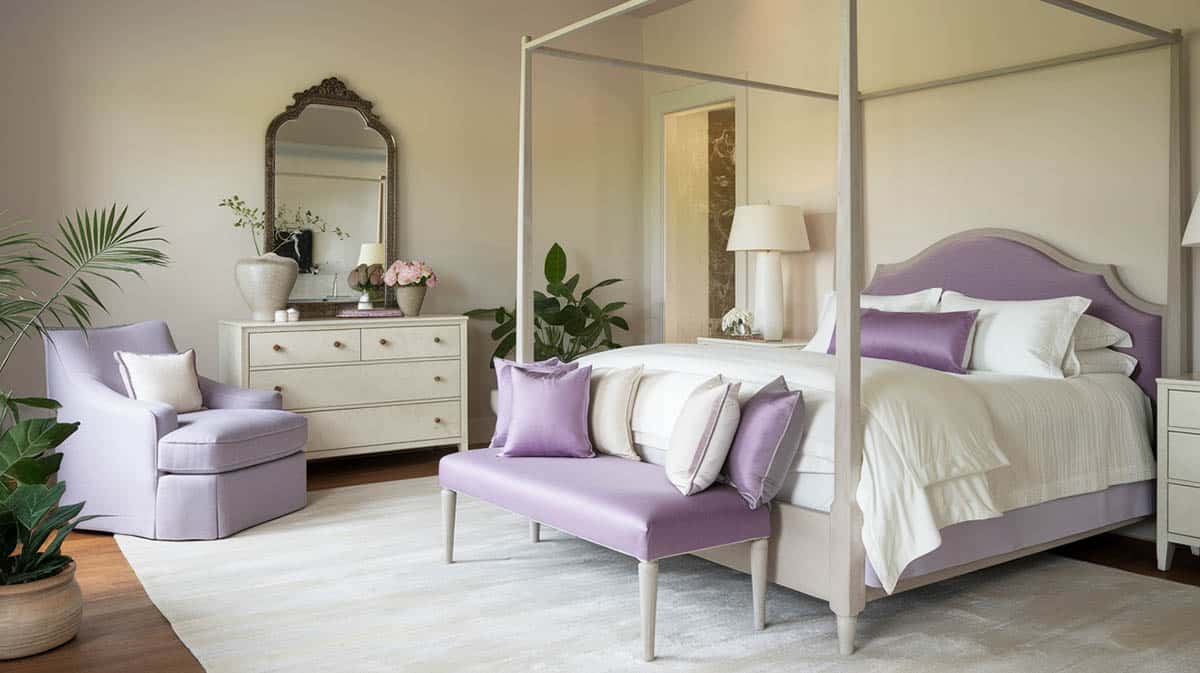
Make Your Bed the Focus of the Space
Your bed should be the focal point in your bedroom so give special attention to it – from the frame of the bed to the linens and pillows, so that everything goes with your relaxing theme.
A low-profile upholstered bed frame is a good choice because it gives a soft, sophisticated touch to the bed. Layer the bed over with comfortable, quality, soft beddings to create a great luxurious feeling. Start with a fitted sheet, add a top sheet, then cover with a duvet quilt or a comforter. Don’t skimp out on plush pillows in lots of different sizes and varied textures.
For added decorative touches and comfort, go with pillows or throws in decorative patternings. Add a couple of faux fur or knitted wool for an added feeling of coziness.
Interior Design Tip: Simplicity and good quality are the two main things you need to be looking for in beddings. Also, avoid too many accessories on the bed as it will make it less restful.
Invest in a High Quality Mattress
Your mattress is the foundation of a restful sleep. So it makes complete total sense that it also requires the most important investment in your bedroom. After all, it really doesn’t matter how beautifully decorated the bedroom is, if the mattress does not bring comfort to your sleep.
A good, high quality mattress does not only give you comfort and keeps you energized, but also affects your health and well being. It helps align your spine, reduce muscle tension, and promote deep, restorative sleep.
When choosing a mattress, consider factors like support, materials, and longevity to find one that meets your unique needs. Memory foam and chiropractic mattresses cradle pressure points, latex provides gentle support with a touch of bounce, and hybrid options offer a balanced combination.
Interior Design Tip: The lifespan of a mattress may usually be increased by how you maintain it. Make sure to vacuum it regularly to remove any dust and mites; and turn your mattress every 3, 6 or 12 months, depending on its type.
Likewise, Invest in a Good Pillow
Your pillow is a major factor in how well you sleep at night. Some like the pillow hard, while others prefer a soft one for sleeping. Find one that supports your body and suits your sleeping position best, whether that’s on your back, side, or stomach.
Interior Design Tip: Always keep your pillows smelling fresh by washing them at least twice a year, and replacements should occur every 1 to 2 years.
Incorporate Relaxing Scents
Fragrance has an extremely emotional connection and can instantly set up a peaceful atmosphere. Bring soothing fragrances to your bedroom theme subtly using scented candles, oil diffusers and room sprays.
Scented candles in lavender, chamomile, and sandalwood can be great for relaxation. Choose soy or beeswax candles because they burn cleaner and longer. With a diffuser for essential oils, you can have a much gentler yet longer lasting scent. Try adding a little lavender and eucalyptus or lavender and chamomile together to make the scent calming.
Natural room sprays are also a great way to make your bedroom relaxing. A light spritz of linen or room spray can freshen your bed. Look for non-toxic, all-natural varieties to keep the air fresh.
Interior Design Tip: More is less where scent is concerned. If you can’t pick the one fragrance, avoid five competing ones. Opt instead for a single fragrance to keep it fresh and inviting.
Consider the Power of Soundscapes
Create the total experience in your bedroom by soothing your other senses. A soothing soundscape not only hides unwanted noises but also helps your mind slip into a restful state, making it easier to fall asleep and stay relaxed.
To add an extra feeling of relaxation in your bedroom, you might consider using sound-aids like a white noise machine or even tiny Bluetooth speakers playing soft background sounds, like ocean waves, rain showers, or forest ambience sounds.
Interior Design Tip: If you prefer music, try calming instrumental playlists or nature-inspired soundtracks.
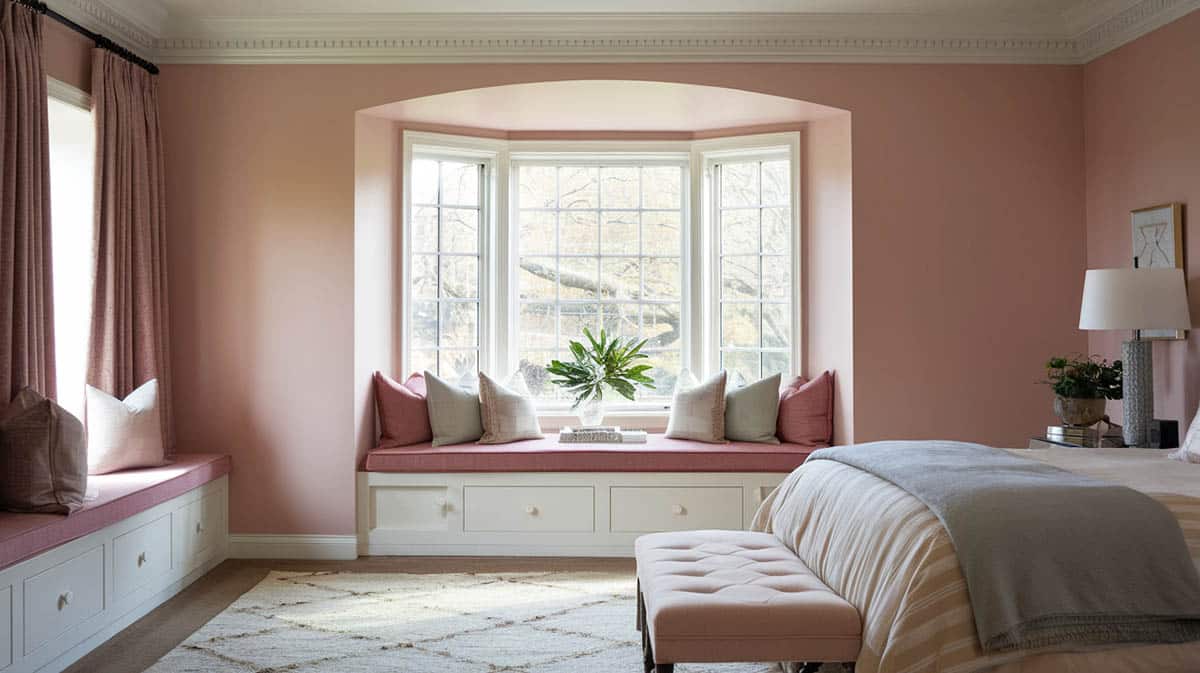
Keep your Bedroom Uncluttered
A relaxed bedroom doesn’t have clutter in it. Try to limit visual clutter by keeping your nightstand and dresser top clear of non-essentials. Stick with just a few favorite books, an aromatic candle, or decorative tray.
Clutter has a tendency to build up in a bedroom; therefore, adequate storage will be needed. Invest with storage systems that fit with your theme, like built-in closets, a storage bench, or style woven baskets.
Interior Design Tip: Try to let go of clutter by using the “one in, one out” rule wherein you remove one thing, every time you bring in something new.
Bring in a Personal Touch to your Bedroom
While a peaceful bedroom must be soothing, the personal touches really make it yours. So go for things that excite you but will not overwhelm the room like artworks, books, journals, photos and sentimental pieces.
Keep artwork simple and fitting with your color scheme like abstract pieces, landscapes or a favorite quote in a simple frame work well. Add some sentimental pieces, like a family photo or a souvenir from a meaningful trip, to keep the space personal and comforting.
If reading is part of your nightly routine, keep a curated stack of books or a journal nearby. A small tray on the nightstand is perfect for keeping them organized.
Interior Design Tip: Select a few pieces that are close to your heart like a photo in a decorative frame. Personal touches add up to the calmer look.
Bed Positioning For a Restful Feel
Having a strategic bed placement and well-thought out furniture layouts can make all the difference. Let’s start with where you position your bed so its in the most soothing spot. The ideal location is centered on the main wall with a clear line of sight to the door. That way, you feel securely cocooned yet still aware of your surroundings. Avoid sticking your bed under the windows, though – direct light and noise can disrupt sleep.
Now we’ve got the bed in place, let’s arrange the furniture around it. Clear pathways around the bed are key to enhancing the flow and visual serenity. Flanking both sides symmetrically with matching nightstands also promotes relaxation through balance. Next to the nightstands, incorporate cozy seating at the foot of bed, like a padded bench or armchair, for that welcoming hotel suite vibe.
Incorporate Mindful Design Elements
Designing a beautiful bedroom is as much about function as it is about aesthetics. Add elements that create mindfulness: a meditation area, a small altar or something to bring you joy or peace. Such personal touches will help you to mentally transition to a peaceful state as you step into your room, making it the true sanctuary from all the stress of the day.
Interior Design Tip: A night stand is the best place to display your “mindfulness corner” because it keeps things easily accessible before you sleep.
Add a Hint of Nature with Indoor Plants
Plants and natural objects are great for creating a feeling of serenity in a place. They also infuse life into an indoors environment while some even purify the air.
If you’re not the best plant parent, start with low-maintenance options like snake plants, pothos, or a jade plant. These plants are resilient and thrive in low-light conditions. A small vase with fresh flowers on a nightstand or dresser is a nice added touch of luxury. They add a splash of color and refreshing scent.
Interior Design Tip: Pick planters that fit into your decor style. Plain ceramic or matte-finish planters are perfect for any modern, relaxed bedroom. You can also bring a little of the great outdoors in by using natural decor with wood, stone or rattan. Try adding in a wooden tray and stone planter along with a wicker basket.


